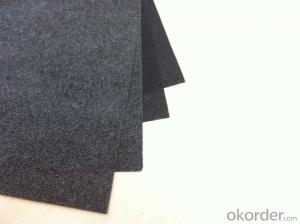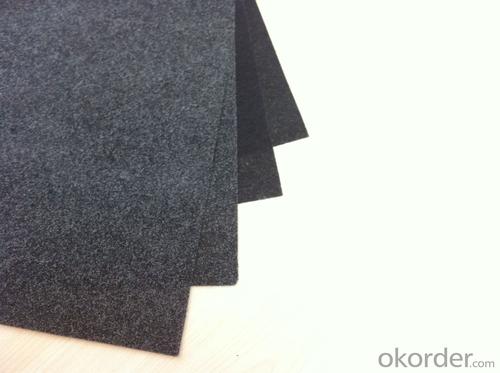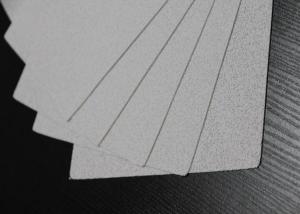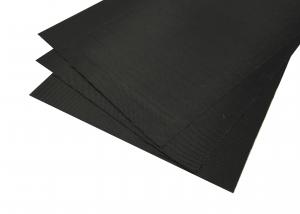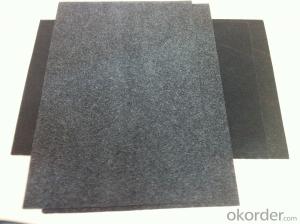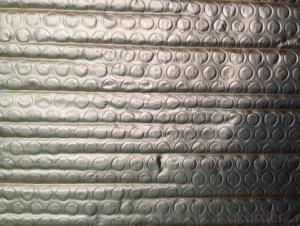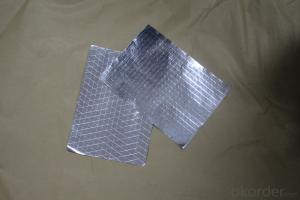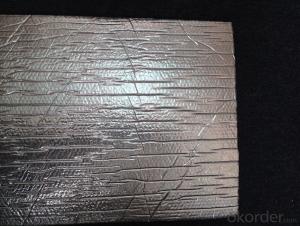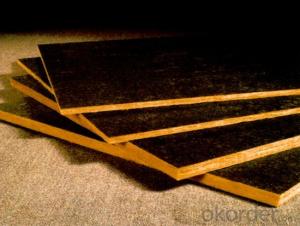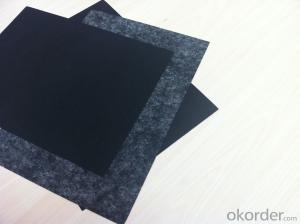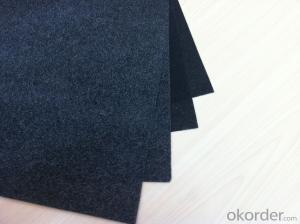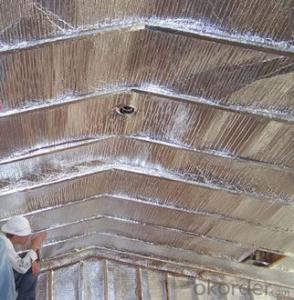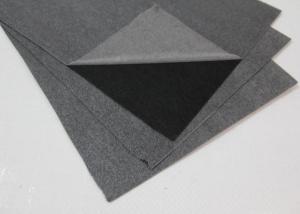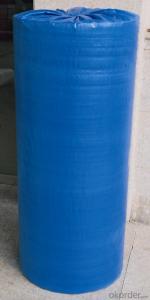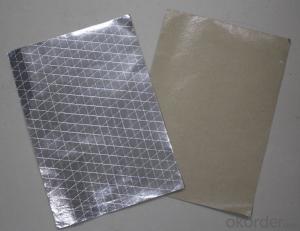60gsm E Class Black Fiberglass Facing Tissue-60E
- Loading Port:
- Shanghai
- Payment Terms:
- TT OR LC
- Min Order Qty:
- 500 m²
- Supply Capability:
- 100000 m²/month
OKorder Service Pledge
OKorder Financial Service
You Might Also Like
Black Spraying Coating Fiberglass Tissue
Fiberglass Tissue is a kind of facing, which is made of by the white fiberglass tissue, and special production process.
Our black tissue are mainly used as facing for glass wool insulation, rockwool, mineral wool etc. Also fiberglass tissue facing is used under roof decking, under attic rafters, over existing attic thermal insulation, in floors, walls and crawl spaces, and in industrial and commercial buildings
Advantage of Blace Spraying Coating Fiberglass Tissue
Light weight
• High manufacturing accuracy
• High strength
• Small inertia resistance
• Strong heat dissipation ability
• Good visual effect
• High reflective insulation
• Heat resistant, water proof, stable at high temperature;
• Environmentally friendly, no smell and not-toxic;
• Smooth and clear surface;
Fiberglass Tissue Application
building reflective heat, cold and hot water pipe insulation;
refrigerator partition, central air conditioning, refrigerator and household appliances insulation;
insulation, sound-absorbing, noise reduction and moisture-proof insulation in the car, train, refrigerator car, laboratory and other industries;
special product packaging and refrigerated packing and so on
Packing of Blace Spraying Coating Fiberglass Tissue
1. Waterproof paper then PVC shrinking Film
2. Water-Proof film only
3. Woven cloth
4. Kraft paper or Water Proof Film then Metal/wooden pallet
5. (Also as your request. )
Specification of Fiberglass Tissue
PROPERTIES | UNIT | VALUE | TEST METHOD |
Basic weight | gsm | 105 | ASTM D646 |
Tensile strength: M. D. X. D. | N/25mm | 140 60 | ASTM D828 |
Burst strength | N | 40 | ASTM D774 |
Reflectivity of foil surface | % | 95 | ---------- |
Temp. Resistance | -29°C 66°C | No Delamination No Delamination | ASTM C1263 |
Water vapor permeance | ng/N.s | 1.15 | ASTM E-96 |
Pictures of Black Spraying Coating Fiberglass Tissue
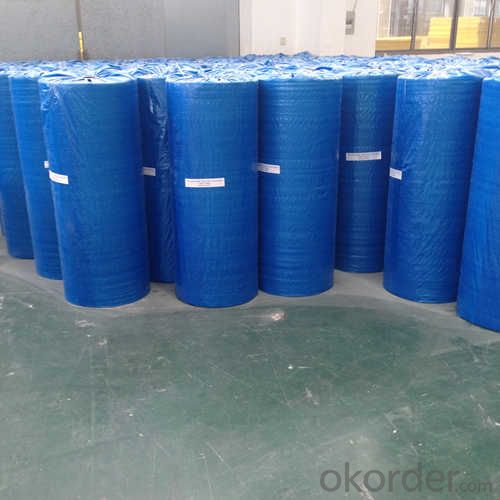
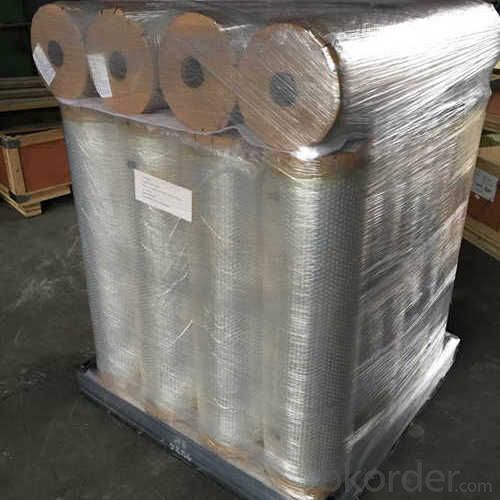

FAQ
We have organized several common questions for our clients,may help you sincerely:
1. What is the storage condition?
The Aluminum Foil Facing should be stored at room temperature and kept from wet and heat source.
2. How to guarantee the quality of the products?
We have established the international advanced quality management system,every link from raw material to final product we have strict quality test;We resolutely put an end to unqualified products flowing into the market. At the same time, we will provide necessary follow-up service assurance.
3. How long can we receive the product after purchase?
In the purchase of product within four working days, we will arrange the factory delivery as soon as possible. The specific time of receiving is related to the state and position of customers. Commonly 7 to 10 working days can be served.
- Q: Does fiberglass facing require regular maintenance?
- No, fiberglass facing does not require regular maintenance.
- Q: Is it possible to utilize black fiberglass tissue for creating insulation materials suitable for homes in cold climates?
- <p>Yes, black fiberglass tissue can be used for making insulation materials for homes in cold climates. Fiberglass insulation has excellent thermal resistance properties, which help in retaining heat within buildings. The color of the fiberglass does not significantly affect its insulating capabilities. However, it's important to ensure that the fiberglass insulation is properly installed and has a high R-value to maximize its effectiveness in cold climates.</p>
- Q: What are the most effective steps to adhere a black fiberglass tape to a wall or ceiling?
- <p>The best way to install a piece of black fiberglass tape on a wall or ceiling involves preparing the surface, applying the tape, and securing it properly. First, clean the area thoroughly to remove dust and debris. Then, cut the fiberglass tape to the desired length. Apply a high-quality adhesive specifically designed for fiberglass to the back of the tape. Press the tape firmly onto the surface, starting from one end and smoothing it out to remove any air bubbles. Use a putty knife or your fingers to press firmly and evenly. Let the adhesive dry according to the manufacturer's instructions before handling or applying any weight to the tape.</p>
- Q: Is it possible to utilize black fiberglass tissue within the interior of a car?
- <p>Yes, black fiberglass tissue can be used in car interiors. It is known for its strength, durability, and lightweight properties, making it suitable for various interior applications such as decorative panels, structural components, and even certain types of trim. However, it's important to ensure that the material meets safety standards and is properly treated for any potential health concerns related to fiber exposure.</p>
- Q: What distinguishes black fiberglass from other fiberglass types?
- <p>Black fiberglass is a specific type of fiberglass that is dyed black, which gives it a distinct appearance and makes it suitable for applications where a darker color is desired. Other types of fiberglass can be clear, white, or colored, depending on the application and aesthetic preferences. The primary difference is in the color and possibly the additives used to achieve the color. Functionally, they all serve the same purpose of reinforcing materials, providing strength and stability, but the choice of color can affect heat absorption, visibility, and the overall look of the final product.</p>
- Q: What safety measures should be considered when using black fiberglass tissues in a baby's room?
- <p>When using black fiberglass tissues in a baby's room, it's crucial to ensure that the fibers are not inhaled by the baby, as they can be harmful. Always ventilate the room well to disperse any airborne fibers. Avoid using these tissues if the baby is present, and clean up any mess immediately to prevent the baby from coming into contact with the fibers. It's also important to wash hands thoroughly after handling fiberglass tissues to prevent the transfer of fibers to the baby. If possible, consider using alternative materials that are safer for a baby's environment.</p>
- Q: Is it possible to utilize black fiberglass scraps for creating a flooring system in a residential setting?
- <p>While it is technically possible to use black fiberglass scraps to create a flooring system, it is not recommended for a home. Fiberglass scraps can be brittle and may not provide the structural integrity needed for a safe and durable floor. Additionally, they may not be comfortable underfoot and could pose a risk of injury due to sharp edges. Professional flooring materials are designed for residential use and offer better performance, safety, and comfort. It's best to use materials specifically intended for flooring to ensure the longevity and safety of your home's flooring system.</p>
- Q: This question seeks to understand the distinctions between fiberglass and other non-woven materials.
- <p>Fiberglass is a type of composite material made from fine fibers of glass, which are often combined with a resin to form a strong, lightweight material. It's known for its high strength-to-weight ratio, resistance to corrosion, and electrical insulation properties. Other non-woven materials, such as those made from plastics, natural fibers, or synthetic fibers, differ in composition and properties. For instance, plastics-based non-wovens may be less durable and more prone to degradation, while natural fibers like cotton or wool offer different thermal and comfort properties. Each type of non-woven material has unique characteristics that make them suitable for specific applications, with fiberglass being particularly favored in construction, automotive, and aerospace industries due to its strength and durability.</p>
- Q: This question asks about the correct method to dispose of used black fiberglass tissue.
- <p>To properly dispose of used black fiberglass tissue, follow these steps: First, ensure that the tissue is dry to prevent mold growth. Place it in a sealed, heavy-duty plastic bag to contain any fibers. Avoid puncturing the bag, as fiberglass can be harmful if inhaled. Check local regulations, as some areas have specific disposal guidelines for hazardous waste. If your local waste management facility accepts hazardous waste, take the bag there for proper disposal. If not, contact a professional hazardous waste disposal service. Always wear protective gear, such as gloves and a mask, when handling fiberglass to minimize skin and respiratory exposure.</p>
- Q: This question asks about the uses of black fiberglass tissue across different sectors.
- <p>Black fiberglass tissue, also known as black glass fabric, is widely used in various industries due to its high strength, heat resistance, and electrical insulation properties. In the construction industry, it is used for reinforcing materials in composites and as a base for flooring. In the automotive sector, it is utilized for brake linings and heat shields. The electronics industry employs it for printed circuit boards and insulation. It is also used in aerospace for heat-resistant components and in the marine industry for hull reinforcement. Additionally, it finds applications in the production of sports equipment, such as surfboards and kayaks, and in the creation of high-temperature resistant fabrics for industrial settings.</p>
Send your message to us
60gsm E Class Black Fiberglass Facing Tissue-60E
- Loading Port:
- Shanghai
- Payment Terms:
- TT OR LC
- Min Order Qty:
- 500 m²
- Supply Capability:
- 100000 m²/month
OKorder Service Pledge
OKorder Financial Service
Similar products
Hot products
Hot Searches
Related keywords
